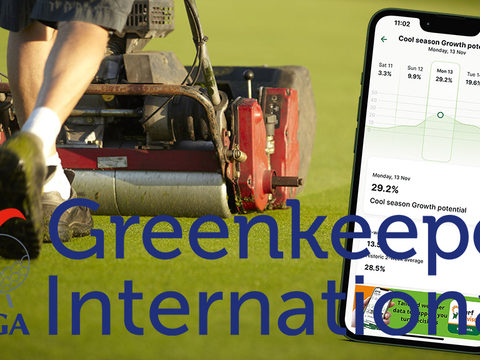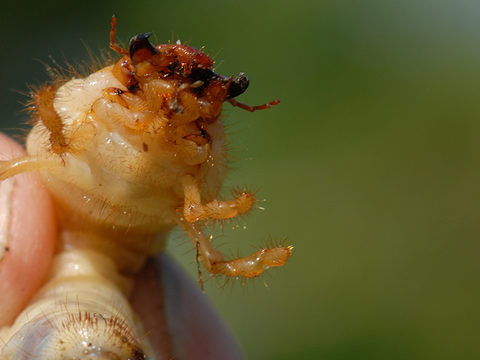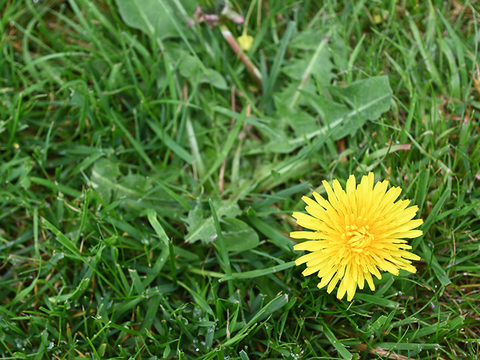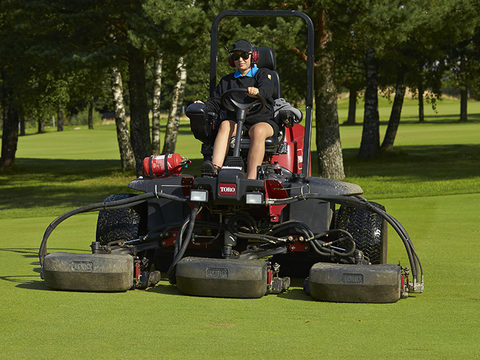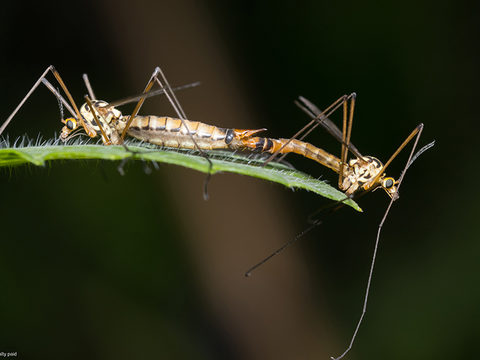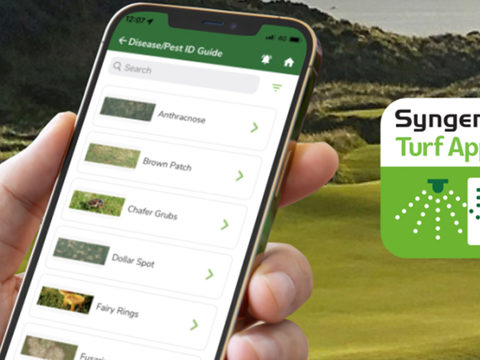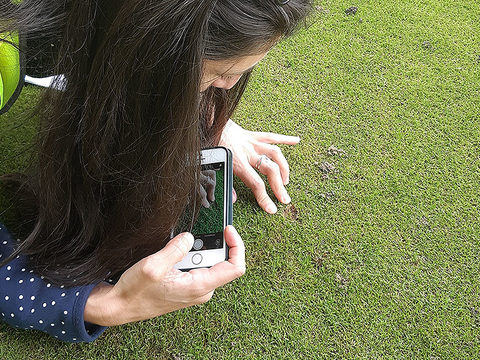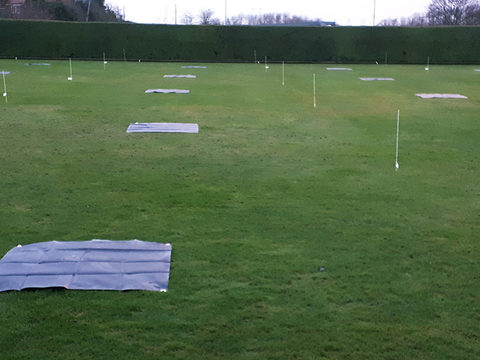Integrated strategies on trial
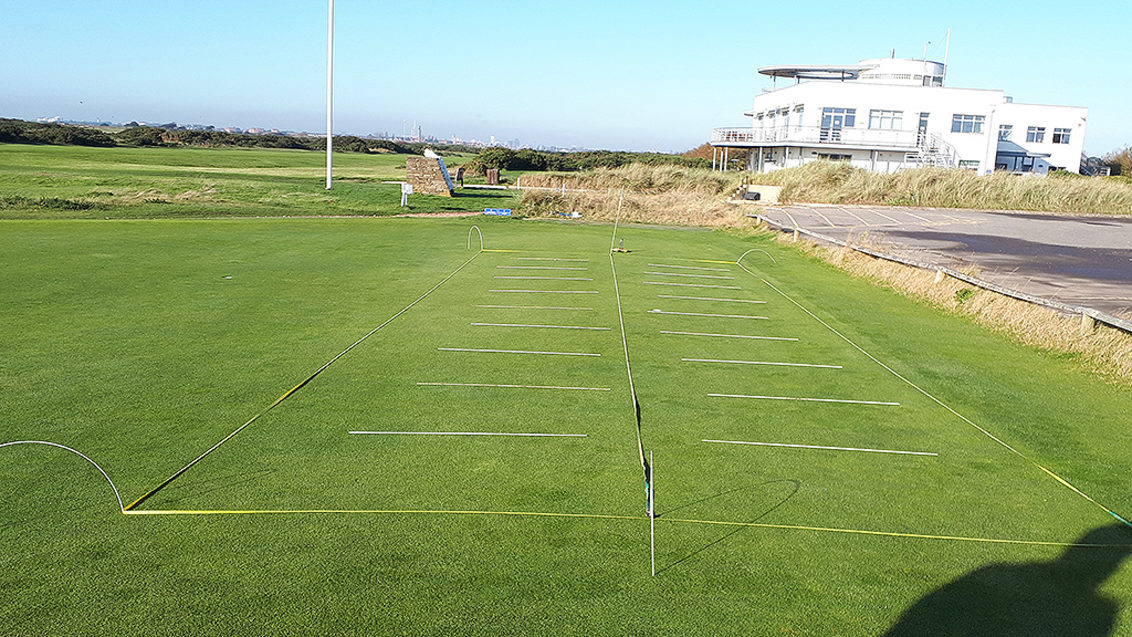
Managing quality turf through more challenging climatic conditions and greater pressures from pests and diseases increasingly calls for more a complex integrated approach to optimise results and build greater resilience.
With more elements put into the mix, including nutrition, biostimulants, wetting agents, trace elements and biologicals, for example, alongside conventional fungicides, insecticides and growth regulators, it’s increasingly difficult to know what or how much each element is contributing.
Some products will undoubtedly be making a fundamental difference, others adding valuable marginal gains, but some may be giving little or no tangible benefit. The question is how much could you expect to see, and how much will actually occur in your specific situation?
The first step is to rigorously interrogate the trials data that should be supplied before any product is purchased. That does require some scientific knowledge, to be able to pick out what is significant, and what is essentially down to chance. Look at the source, to see who did the work and where trials were undertaken? - to help predict how that might transfer to the conditions you might expect to experience.
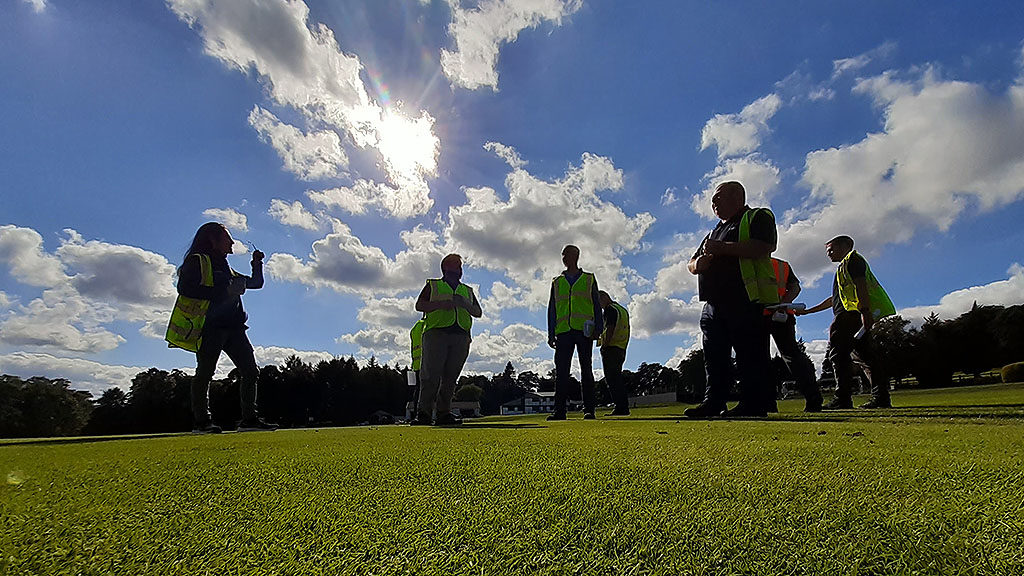
Also look closely at differences to any untreated control – which is the true measure of efficacy. In product R&D, trials should be undertaken in high pressure situations, where the target issue is encouraged, rather than positively managed, as that begins to tease out what is having the best effect. When it is then put into practice in lower pressure situations and other control methods coupled with it, the results should be even better.
Conversely, if a product has been assessed under low disease or pest pressure, it may initially look very good. But under test of a higher risk situation, it could be found wanting in its desired levels of control.
For example, if a new fungicide performs well against microdochium patch on a poa-based sward in the relatively warm and wet conditions in Ireland, for example, it is likely to be exceptional under less intense pressure of a bent/fescue green in central or eastern England. When you couple that with a the right nutrition programme and good management practices the results should be better again.
While the objective of R&D trials is principally to find the most effective product, it is also valuable to understand from the outset how it will work in combination with other inputs and turf management practices, to achieve the best possible results.
That has increasingly come to the fore with the introduction of more sophisticated Integrated Turf Management (ITM) strategies. With ever greater scrutiny on greenkeeping budgets there is the need to know what each element of an ITM programme is delivering, along with the desire of a higher-level educated greenkeeping industry to question and better understand what is being used, and why?
STRI research
Syngenta research initiatives at STRI over recent seasons have looked in far greater depth at complex interactions between nutrition, biostimulants, stress protection, growth regulation and turf management practices, along with disease control, to offer an insight into practical ITM solutions and real-life scenarios.
But the next step is to put the ITM strategies to the test under your own situation and conditions., Every course is unique in the challenges it faces, the climatic conditions experienced and the turf management practices employed – along with the club members’ expectations.
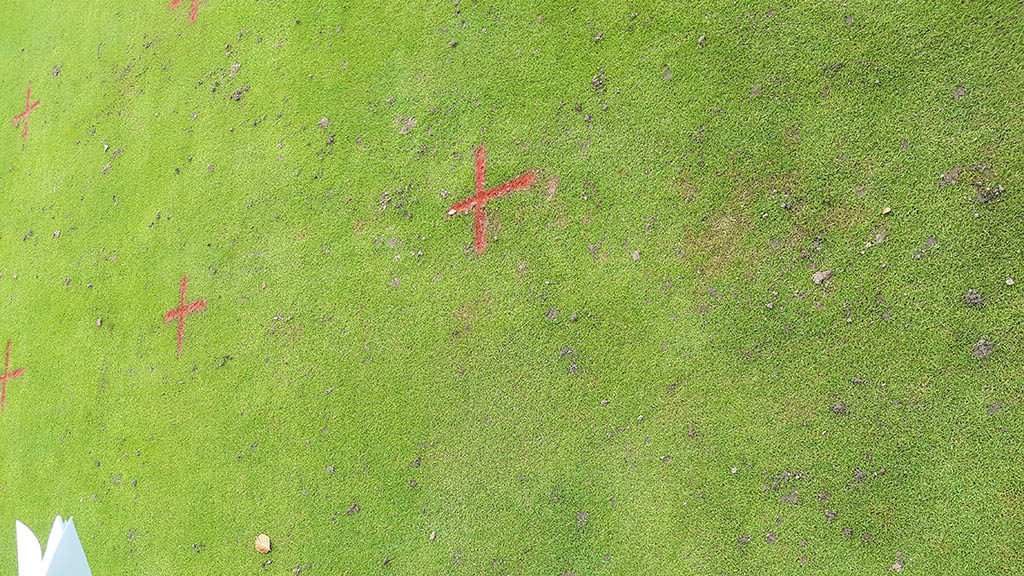
With the development of ITM strategies to cope with evolving pest and disease pressures, new ideas and techniques will have to be introduced. Part of that is to mitigate the loss of some protection products that were easy to use, highly effective and required little additional extra greenkeeping practices to ensure success.
The difficulty lies in quickly introducing a complex mix of strategies and seeking to evaluate what each one brings to the party.
Research has shown that when you bring together two new products that individually have shown good results, the sum of the two parts may not be as great as anticipated.
On course trials are an extremely valuable way to gain experience of what works for you. At a minimum, simply using knock-out boards placed over an area of a green will prevent a spray or granule reaching the turf and provide a comparative check of the result. To get a reasonable picture, it is advised to assess at least different three greens, ideally one that you would consider typical for the course conditions, one that is most susceptible to the issue being treated and one that is least susceptible. Replication of this type is one of the fundamental foundations that good trial work is built on.
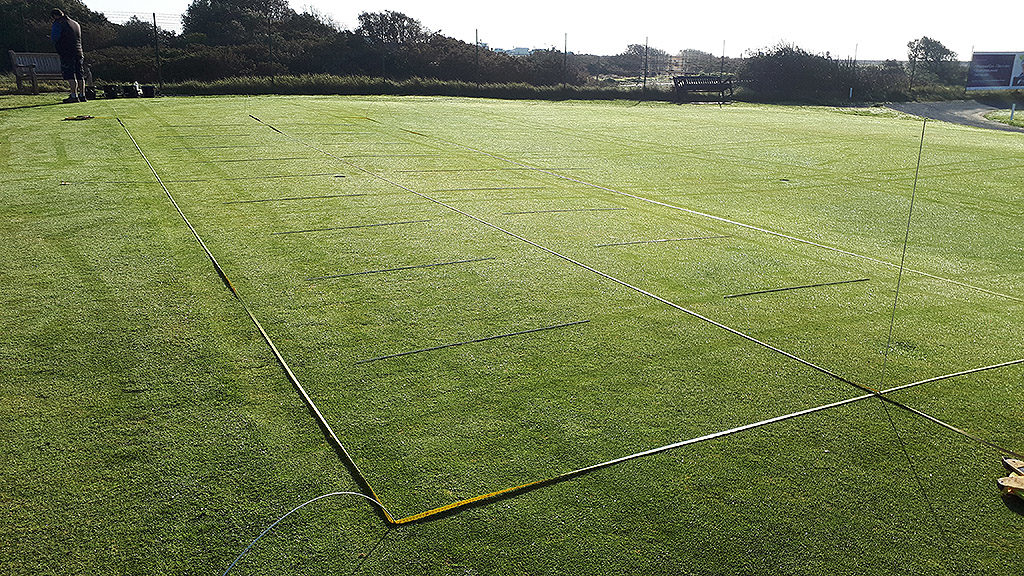
It may be that you are looking to assess a whole ITM strategy, whereby an entire application or treatment can be shielded. However, if you are looking at a single component in a mix, there is an additional effort to spray the entire area with the base mix, and then overspray with the single product under evaluation with the knock-out boards in place. If you don’t give the control area the base nutrition or same PGR as the rest of the green, for example, the value of a biostimulant or fungicide being trialed cannot be truly assessed.
The difficulty with assessing a whole season approach is that the knock-out boards need to be replaced in precisely the same position for each treatment, which can be accurately achieved with markers. This can be difficult and time consuming. Potentially GPS systems in the future will assist accurate trial recording and replication.
It is important to check that any control plots are representative of the overall surface. It’s not realistic to put the control in a dark, wet back corner of the green, and then compare that to performance of a treatment on a light, airy part of the green. Similarly, if the control is already showing signs of disease but the rest of the green is clean, it is not going to give a reflective result.
Results recording
Recording trials is paramount. Firstly to capture exactly what was applied, where and when, including the application details and any other comments or observations. You then need to record any weather data and management practices that occur over the course of the trial period – which could be as short as a week, but maybe a season long assessment.
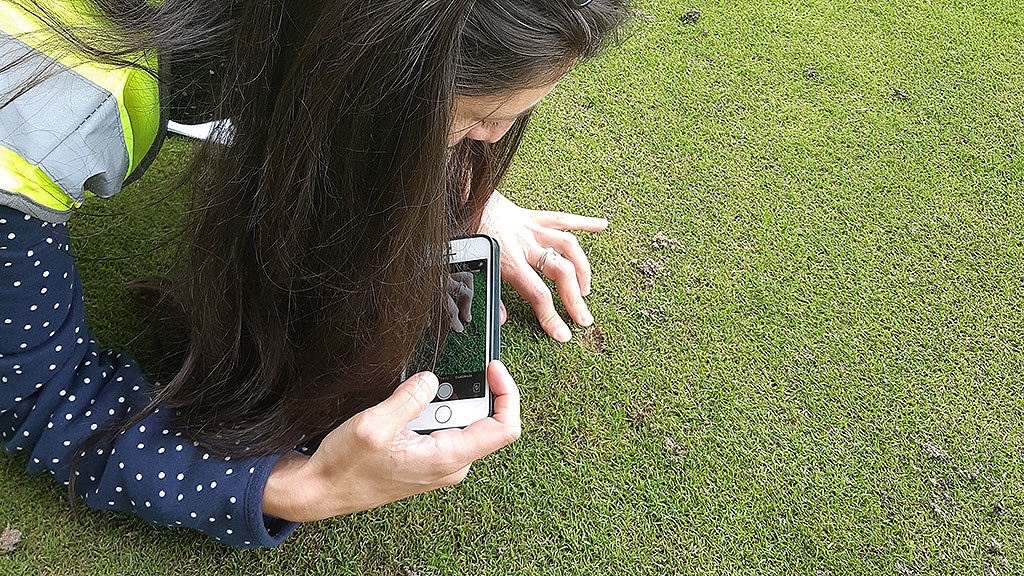
The value of accurate weather records – typically rainfall, temperature, evaporation rates and light levels – is that if similar conditions occur again, you can look back to check what worked most effectively. With changing climatic conditions we are increasingly seeing wider variation of what can occur in any season, which indicates decision making needs to be according to prevailing conditions, rather than calendar dates.
Using tools such as Growing Degree Days adds another layer of turf specific information that could prove useful in interpreting and utilising results on the future.
Visual assessment of trial performance remains a valid way to review results, since that it was golfers will judge it on too. However, it can be subjective and is reliant on the same person doing all the assessments to maintain consistency. A simple 1 – 5 scale may well be the most effective way with something as simple as
1 – completely clean no evidence of damage
2 – evidence of damage to an experienced eye
3 – evidence of damage, but not disruptive to putting surface
4 – Damage obvious to the putting surface
5 – Unacceptable levels of damage
By limiting the number of options and associating written explanations, the chance of scores being consistent is improved and can be more directly comparable between trials on different sites.
Creating consistent score systems and ways in which to set the trial up all add to the power of the results. If all the replications across the surfaces show the same trends, then the data is more likely to be trustworthy.
Trials can be further assessed with more scientific instruments that give consistent, comparative data, such as NDVI meters of turf health that are relatively inexpensive.
Taking photos is great to reveal comparative differences and review progress over a period, but they do need to be saved and labelled accurately. Drone imagery gives a new perspective on results.
Results recording for most turf trials would be on a weekly basis, although some short-term effect products might benefit from more frequent observations, while others might be looking at monthly assessments. The key is to get regular data points to be able to plot any changes and trends. If the season turns out to be unusual for weather or background pressure of pests or disease, for example, the results may be skewed and viewed with reservation, or to repeat the trial the following year to see if it is repeated.
Setting up to record trials results on a spreadsheet, such as excel, can enable the creation of graphics to depict trends. This is where the true value of replication of trial plots is most evident, since consistent trends point towards more reliable data. This is beneficial to easily visualise differences, but also to powerfully demonstrate to golf club management or in players’ newsletters to explain results of what has been done and why.
Simplified strategy
The more complex the trial the more information that can be gathered, however it will take more time and effort. If there are too many factors, it can become increasingly difficult to tease out what influence each input is having. If you have an input where you are unsure or questioning its value, then it’s a good place to start with an on-course trial.
One aspect to explore could be collaborative testing of strategies among a local group of courses where similar conditions occur, and like-minded practices used. It’s less perfect, since other influences may impact, but it would enable a wider range of products and practices to be evaluated. It does have the added benefit of different people assessing and discussing the results.
On-course trials could be invaluable for refining an ITM strategy that works for your specific situation, as well as introducing new elements, from grass varieties to aeration equipment, to biostimulants or biological controls. It can help ensure you get best value for money from your budget, as well as maintaining turf more effectively under changing pressures and risks.
As we move in to an era where ITM programmes consist of many parts, then on-course trials that break the programme down into individual components and assess the value of each, one at a time, is the best place to start.



